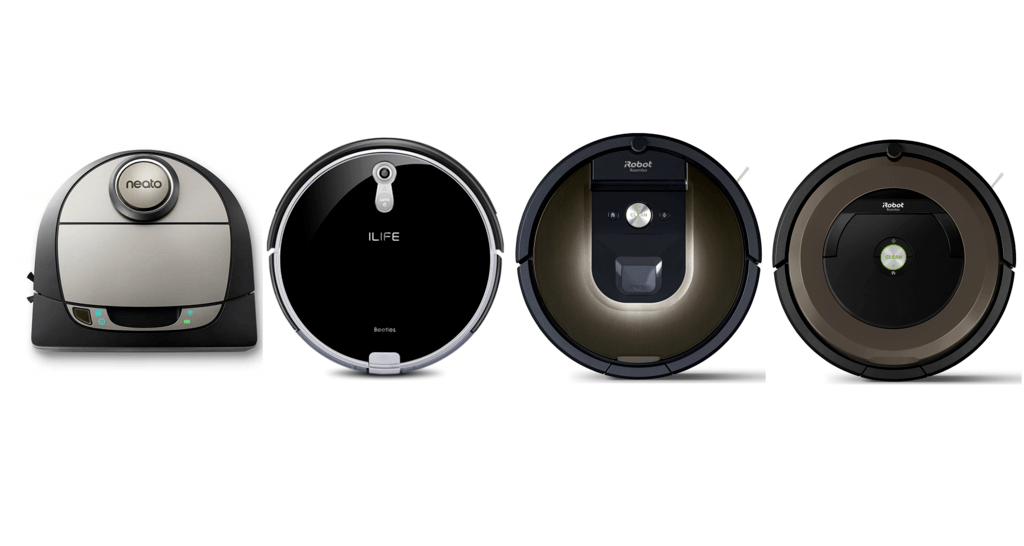Last Updated: Oct 12, 2019.
So you have a house full of carpet, you’re tired of dragging that full sized upright around, and you are looking for a robotic alternative.
Luckily, you have a lot more options and features to choose from today.
While they may never replace a corded upright, having an autonomous cleaner between upright vacuum cycles is crucial for maintaining cleaner floors.
You may be dismayed at the number of robots that fail to clean carpet very well. Let’s take a look at the best carpet cleaning robots available to you.
From our experience reviewing nearly every robotic vacuum on the market today, these are the top contenders for best vacuum for carpeted households.
Contents
- 1 Update for 2019:
- 2 How To Choose The Right Robot For Carpet
- 3 Comparison Table
- 4 (1) Roomba 980 – For Those Who Need the Best of the Best
- 5 (2) Neato BotVac D7 – For Those Who Want the Strongest Suction
- 6 (3) Roomba 890 – For Those with Smaller, Simpler Layouts
- 7 (4). ILIFE A8 – For Those On a Budget
- 8 Bonus Alternative – Samsung Powerbot
- 9 Conclusion
Update for 2019:
With the release of so many new robot vacuums this year, all of our top contenders have been replaced by a better model. Here is the updated list of the best robot vacuums for carpet in 2019:
Best for those on a budget:
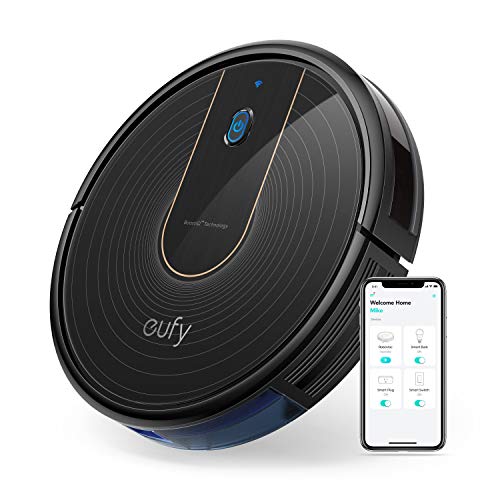
What to like:
- Strong suction.
- Budget friendly.
- BoostIQ increases suction when extra suction is needed.
What not to like:
- Random cleaning pattern is not as efficient as vacuums that have logical navigation using cameras and sensors.
- Hair may get tangled in the rolling brushes.
Best Mid-Tier:
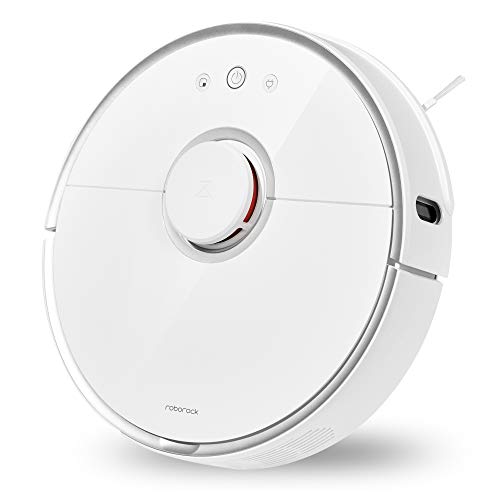
What to like:
- Uses LIDAR navigation for a logical, efficient cleaning pattern.
- Strong suction, performs well on carpet.
- Virtual no go zones lets you draw lines where you don’t want the robot to go.
What not to like:
- Mopping feature not useful for carpets.
Best Bang for Your Buck:
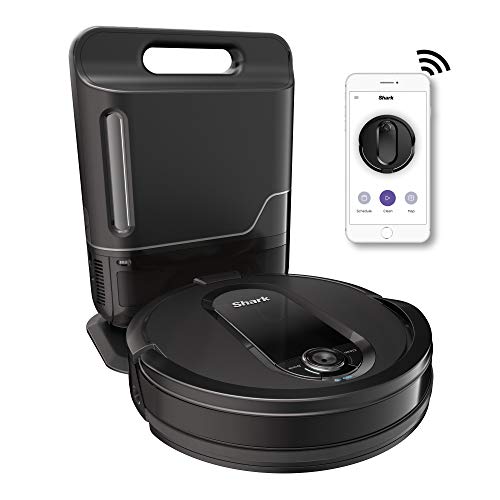
What to like:
- Smart navigation allows the robot to finish vacuuming more quickly.
- Empties itself when done vacuuming.
- Performance on carpet only second to the Roomba s9+.
- Much less expensive than the Roomba s9+.
- Bagless system means you don’t have to spend money on replacement bags.
What not to like:
- Bagless system may bother you if you don’t like to empty the docking station’s dustbin when full.
Best for Whom Money is No Object:
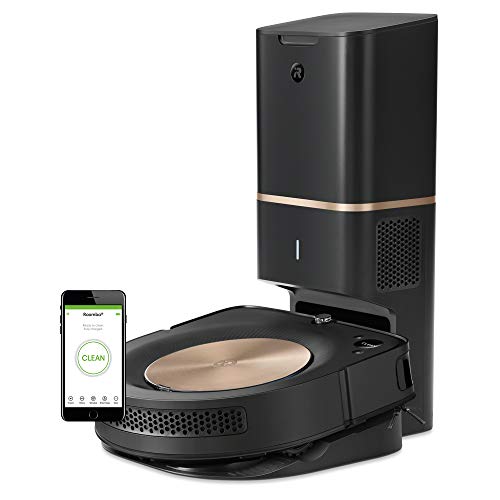
What to like:
- Best performer in deep carpet cleaning.
- Empties itself after cleaning.
- Smart navigation cleans in efficient manner.
- Finishes cleaning the entire floor no matter the size of the house.
What not to like:
- Costs an arm and a leg.
How To Choose The Right Robot For Carpet
When it comes to robotic vacuums one thing most people don’t know is how limited they are on carpet compared to a full sized, manual vacuum.
Compared to an upright model that plugs in, no robot will come close to the sheer power, suction and all carpet clean the upright corded models can offer.
Robot vacuums were never meant to replace the regular cleaning of an upright. Their main goal is to limit the build-up of dirt, dust and debris between regular cleans and be available for quick jobs due to spills or dirt tracked in from outside.
If your home has a lot of carpeting, you need to decide which model is best for you. Not every robot can handle all type of carpeting. So how do you know what to look for?
- Figure out what type of carpet you have. The material the carpet is made from doesn’t really factor in too much unless you have soft woolen fibers that fray easy. You need to know if you have one of the four pile types: low, medium, high or deep pile. Most robots will only clean low pile or medium pile. Rarely will you find one that will handle deep pile (shag).
- Look for tangle-free options. Some robots will have anti-tangle or tangle-free extractors. If the pile is too high, it will bind the rollers and cause the robot to shut down. Being able to free itself, or prevent the binding is a big plus.
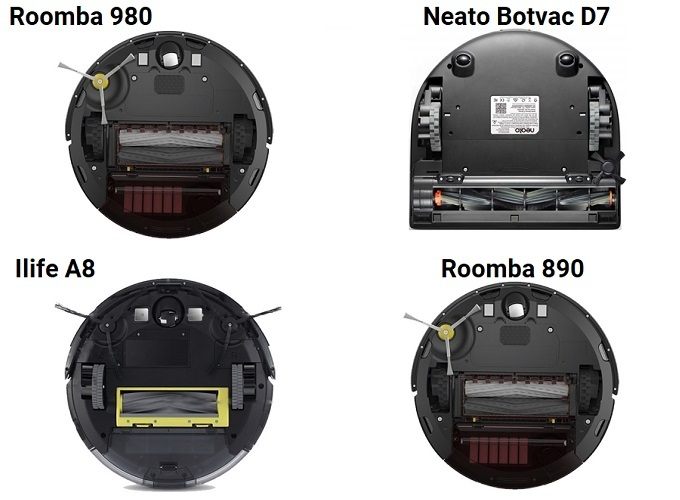
- Bristles versus rubber. Different extractor bars are for different jobs. Some rubberized bars are sweep only and will do well on hard flooring but not so well on carpet. Bristles generally agitate carpet better but can scratch hard floor surfaces. The Roomba models that use the tangle-free brushless extractors are an exception; they agitate most all carpet pile types.
Value Versus Performance
As is often the case, budget comes into play when selecting a robotic vacuum. With so many different models and styles to choose from, the wrong one for your home can ruin your entire experience.
It is, therefore, important to understand that the adage “you get what you pay for” actually means something in this market, though not always.
Sure there are models over $1000 and you can even find a few that are under $200, but your budget should dictate where you begin your search, not end it.
When looking within your budget, and finding models that are rated for your specific flooring type, you also need to consider a few other factors:
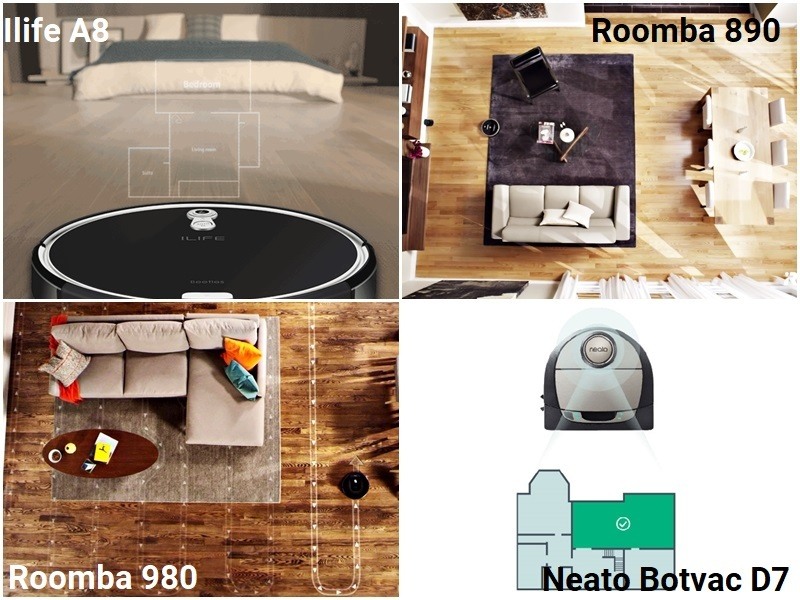
- The size and layout of your home. This will tell you how many square feet need to be cleaned.
- The battery size and expected runtime of the robot. The longer the battery runs, the more likely the vacuum will clean the entire floor in one cycle.
- How much maintenance is required? Some robots are virtually maintenance free (minus emptying the collection bin, of course). While others need near constant maintenance cycles.
- The warranty period. Like anything with moving parts and electronics, it will break down at some point. The longer the warranty, the better the return on your investment should something go wrong.
- Included desirable features. It might be nice to have a robotic cleaner that has every possible feature and option. However, if you aren’t going to use them all, you shouldn’t pay for it.
Once you know how much flooring needs to be cleaned, the type of flooring and what features and options you require, you are ready to start your research. You will have narrowed the selection field dramatically, and accounting for your budget; you should be left with just a few options.
This makes the task of selecting the right robot less tedious. If you are looking for the best robot vacuum for carpet, then I have already narrowed that list for you. Read on to find out how the four top models compare to each other and see if one of them fits your needs.
Every robot vacuum has something it offers that no other vacuum does. They all also have things we would rather they didn’t. Before you make a final selection remember that this unit isn’t designed to replace your upright vacuum and regular cleaning days, nor is it meant to be a set it and forget it robot either.
You will need to know what type of maintenance needs to be done, where to purchase extra things like filters, side brushes or containment units.
Let’s find out which robotic vacuum is best for you.
Comparison Table
Let’s have a quick look at how the four robots stack up against each other in the spec’s department.
| Roomba 890 | Roomba 980 | Neato BotVac D7 | ILIFE A8 | |
| Battery Type | 2600mAh Lithium-ion | 3600mAh Lithium-ion | 3300mAh Lithium-ion | 2600mAh Lithium-ion |
| Battery Runtime | 60 minutes | 120 minutes | 120 minutes | 120 minutes |
| Recharge Time | 2.5 hours | 3 hours | 4 hours | 3 hours |
| Auto Recharge | Yes | Yes | Yes | Yes |
| Auto Resume | No | Yes | Yes | Yes |
| Side Brushes | 1 | 1 | 1 | 2 |
| Extractor Type | Dual Brushless Extractors | Dual Brushless Extractors | Brush Roll | Brush Roll & Brushless Extractor |
| Filter | High-Efficiency | High-Efficiency | HEPA | HEPA |
| Mobile App | Yes | Yes | Yes | No |
| Voice Controls | Yes | Yes | Yes | No |
| Containment | Yes | Yes | Yes | Yes |
| Low Pile | Yes | Yes | Yes | Yes |
| Medium Pile | Yes | Yes | Yes | Yes |
| High Pile | Yes | Yes | Yes | No |
| Deep Pile/Shag | Yes | Yes | No | No |
| Carpet Boost | No | Yes | No | No |
| Dirt Detection | Yes | Yes | No | No |
| Anti-Tangle | No | Yes | No | No |
| Price Range | Check on Amazon | Check on Amazon | Check on Amazon | Check on Amazon |
(1) Roomba 980 – For Those Who Need the Best of the Best
When you want the best, you head to the top; the Roomba 980 will be sitting there waiting for you. What is arguably the best robotic vacuum of all time has faced many adversaries and always come out on top.
Complete with camera guided navigation, the iAdapt 2.0 technology allows the robot to maneuver around your home like it’s been there since day one and vacuum carpet in a human-like pattern with predictable paths.
The filtration is the same high-efficiency style as the Roomba 890 and still captures up to 99 percent of in-home allergens. Pet dander, dust mites and pollen don’t stand a chance and neither does dirt hiding in your carpets.
Rated for all floor types, including all carpet types, the 980 has the same expectations (and limitations) as the 890 when it comes to deep pile shag. Otherwise, the Roomba 980 will scurry across your carpets cleaning better than you could imagine.
The dirt detection ensures that every carpet fiber is clean before the robot moves on, and with the AeroForce and iAdapt 2.0 technology, when the Roomba is on carpet, it will increase the motor and suction speed up to 10 times that of the 600 and 700 series (another five times over the 890).
You have total control over programming, scheduling and will even have the opportunity to see detailed maps of the cleaning cycles to note problematic areas or where the robot may have to return to.
The Roomba 980 also resumes cleaning from where it left off after a recharge of the batteries, in the even the entire level didn’t get cleaned, though, with a run time of near two hours, that will be a rare occurrence.
Best Features
- Larger collection bin means even fewer maintenance days.
- High-quality exhaust filtration to keep allergens out of your carpet and air.
- Advances mapping and navigation that continue to push the mobile app to the top of the leaderboard.
- Two-hour runtime can clean up to 2200 square feet in normal conditions.
- True carpet boost technology knows when the robot is on carpet or hard flooring and adjusts the suction power and speed accordingly.
Areas of Concern
- The Roomba 980 is not the lowest priced model. The price point is very high, but the feature to cost ratio is also high.
- There have been some reported issues with the 980 not making it back to the charging station before dying. This could be for a myriad of reasons but should be watched.
Bottom Line: The Roomba 980 is one of the most expensive robots on the market. You truly get what you pay for though. If it is within your budget, it will serve you well. Low maintenance and high power combine to keep carpets clean.
(2) Neato BotVac D7 – For Those Who Want the Strongest Suction
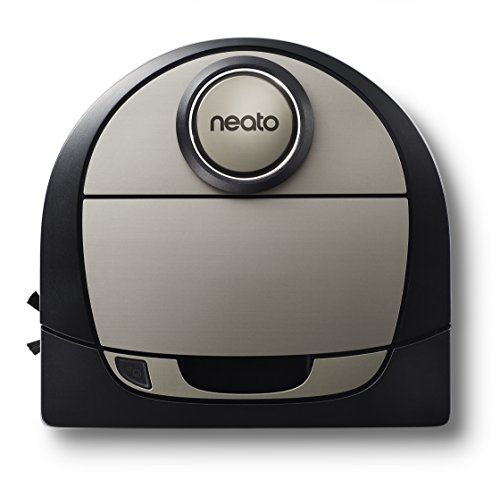
Another top-tier entry comes from Neato. The BotVac D7 is one of the leading robots when it comes to carpets. It uses a standard, single brush roll similar to most uprights. This does create some issues though, and one of the major reasons the Roomba 980 was able to outshine the D7.
The lithium-ion battery pack (3300mAh) offers a runtime of up to two hours, and like the Roomba 980, will resume cleaning where it left off after a recharge of the battery if needed. It can do this because of the laser-guided mapping and navigation. Unlike the 980 that has a camera based mapping and navigation, the D7 relies on lasers to create images in its memory banks.
These images are updated up to 100 times per second in a 360-degree array around the robot. By creating these maps, the robot knows where it is in your home as well as where it needs to go to finish the cleaning cycle.
Containment isn’t as beautiful as with the Roomba models. Instead of a battery operated tower, you get a magnetic tape. You measure and cut the tape and place it along doorways or surround items on the floor you don’t want the robot near.
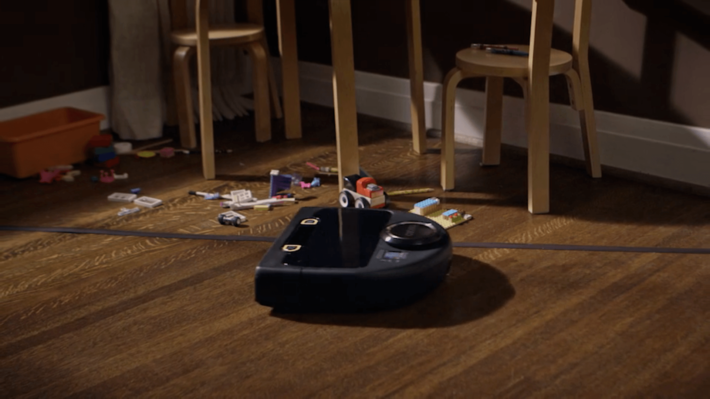
It works, but is clumsy, messy and adds to the overall maintenance. However, there is a second option. Once the robot has mapped your home, that map will appear on the mobile app. You can use what Neato calls “no-go” lines to create boundaries on the mobile app screen that the robot will avoid in real life.
The problem here is that the technology is a good idea on paper but doesn’t always work in practice. The robot is well known to ignore the mobile app no-go lines and clean in areas it shouldn’t anyway.
This means you are left with the magnetic tape as the main source of containment. It works well, but it a lot of extra work on your part.
Best Features
- Long life lithium-ion battery pack gives a long runtime, which is negated since the robot will resume cleaning after a recharge as needed.
- Navigation and mapping are on par with the best Roomba models.
- HEPA certified filtration adds peace of mind to allergy sufferers.
- Rated for low, medium and high pile carpeting means your carpets will be clean without worry.
Areas of Concern
- Without anti-tangle technology, high and deep pile fibers can get caught in the brush roll. This can result in the robot bogging down or causing damage to the carpet (though it is rare).
- Containment through the mobile app is there but needs a serious upgrade.
- The robot cleans in a sporadic pattern, often missing certain areas, which it will cover on subsequent cycles.
- It is reported that when the collection bin gets over half full, the brush rolls and side brushes actually push debris out of the side of the machine instead of up through the collection ducts.
Bottom Line: The cost is high, the feature list is long, but the performance doesn’t match the expectations. It does a great job on all carpets except shag, though, and with regular maintenance will serve your home well.
(3) Roomba 890 – For Those with Smaller, Simpler Layouts
The Roomba line has been at the top of the robotic food chain since their inception. Makers of the very first robotic vacuum, iRobot has continuously raised the bar and expanded the abilities and features of these autonomous machines.
The 800 series was a triumph, showcasing advances in motor speed, suction and navigation. It also allowed the company to experiment with using technology found in the 900 series with mixtures of the 700 and 800 series robots to create the best value for performance machines possible.
The Roomba 890 is the top of the line when it comes to the 800 series (and it even beats out a few of the 900 series robots, too). The Roomba 890 is different from the other robots on this list because it uses cost-saving features such as the first generation navigation, iAdapt, along with advanced features such as carpet boost.
This cost to feature ratio is kept down, resulting in a machine that can clean all carpet types and styles without a lot of fuss. True, shag carpeting can cause the machine to have some difficulty, but the brushless extractors prevent the robot from getting bound and overheated.
Lack cameras, navigation uses a pseudorandom pattern
You will find that the navigation is smooth and collisions and accidents are very rare. The filtration is top notch, despite not having the HEPA label, and will reduce the allergens in your home just like those with the label do.
WiFi connectivity and app integrations
What you won’t find is a lack of control options. You can use local controls to do a cleaning cycle, or connect the robot to your wireless network and utilize the industry-leading mobile app for complete control. There is also third-party integrations with Amazon Alexa enabled devices, Google Home, IFTTT, SmartThings hubs and many others, giving you voice control options a lot of other models don’t.
Performance on carpet is good, but not as good as the 980
The Roomba 890 is rated for all floor types, including all carpet types. Low pile, medium pile and high pile carpet get a decent and thorough cleaning.
Deep pile, or shag carpeting, also gets cleaned, although if you have the 1970’s style long shag, the fibers can get caught in the brushless extractor bars. You will need to test it out on your shag carpeting to be certain.
One thing missing from the 890 that the 980 has is carpet boost. That is only available using the AeroForce technology along with the iAdapt 2.0 that the 900 series offers. The 890 uses the AeroForce technology to increase the motor speed up to five times over previous models like the 600 and 700 series Roomba machines.
Best Features
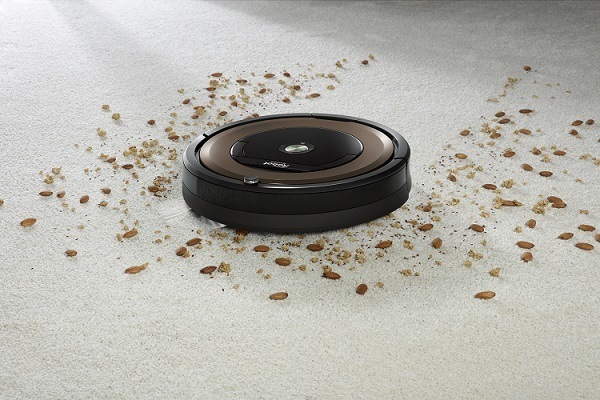
- HEPA quality filtration without the label. Noted as “high-efficiency,” the filters still capture particles as small as 3 microns, including known in-home allergens.
- Dirt detection sensors ensure your carpet is clean through and through.
- Smart controls and wireless options allow you to program and schedule cleanings and modes at any time, from anywhere.
- The containment method, known as virtual wall barriers, provide entire room, partial room, or circular areas protection from entry (or exit).
- Is one of the few models in existence that is rated for all carpet types.
Areas of Concern
- The 2600mAh battery is a little small for all the features to run smoothly. This results in a short runtime of less than an hour in normal conditions.
- The collection bin is on the small side and needs to be emptied after every cycle or every other cycle.
- Does not resume cleaning after a recharging cycle, if the entire level hasn’t been cleaned. You will need to restart the cycle manually.
Bottom Line: The Roomba 890 has the best features to cost ratio of any model on this list. The cleaning is top notch and the maintenance is low. It is a great fit for most homes.
(4). ILIFE A8 – For Those On a Budget
The ILIFE A8 is one of the top of the line models from ILIFE. In production since 2015, ILIFE has continuously created and released robotic vacuums that impress consumers with their abilities and affordability.
The A8 uses one of the most sophisticated technologies for navigation and mapping. It uses camera-based navigation similar to the Roomba 980 and creates maps of your home to use for cleaning cycles and maneuvering.
The battery is on the small side, but the robot will still run up to two hours because there aren’t a lot of features that cause battery drain. You won’t have some the more standard features such as mobile apps, wireless communications or voice controls.
You will get a remote control to set up schedules and control the robot, but the basis of the ILIFE brand is to have a simple to use, reliable robot to clean most floor types. The A8 is the best of the class when it comes to carpets for the ILIFE brand.
The A8 works best on low pile and medium pile carpeting. It will have some difficulty on high pile carpet though, and deep pile or shag will cause it to get stuck and shut down.
The main purpose of the ILIFE A8 is to give you a thorough clean on your carpets without a lot of hassle or extras. By keeping the features list to a minimum, ILIFE is able to keep the costs low creating a budget-friendly vacuum that works in a lot of homes.
Best Features
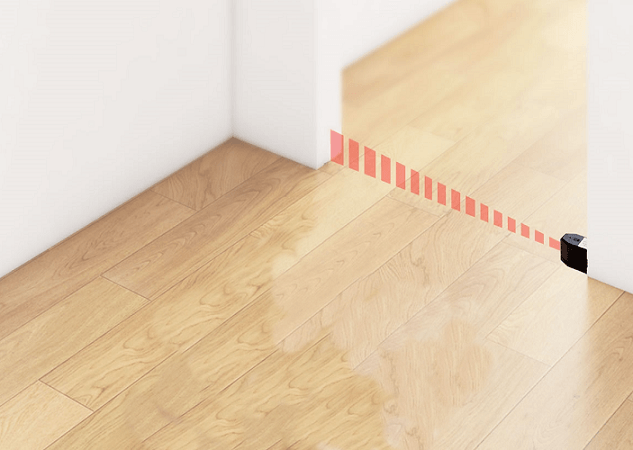
- Long battery life despite the smaller celled battery due to the lack of extra features that cause excessive battery drain.
- Camera-based navigation and mapping create a detailed run through your home that the A8 follows without missing any areas.
- The extremely low cost compared to the rest of the list makes it a very attractive option.
- ElectroWall containment works the same as the Roomba’s virtual wall barriers.
- I-Voice uses speakers and voice to communicate with you any status issues or problems.
Areas of Concern
- The lack of mobile app or voice controls may cause some to take pause. Multiple control options are a large draw for some consumers.
- The A8 doesn’t perform very well on high pile or deep pile carpeting.
- Without dirt detection sensors the robot can miss areas of the floor that need to be cleaned more than once per cycle.
Bottom Line: The cost-effective option is very popular with a lot of homes as long as the carpet is low or medium pile. While it lacks a lot of features, the main concern is clean floors without the extra bells and whistles. It has a single job and it does it well.
Bonus Alternative – Samsung Powerbot
I want to add one more to the list as a quick add-on. The Samsung POWERbot R7040 is an alternative option if you don’t think any of the above robots fit your home or budget.
The POWERbot R7040 is a mid-level robot that is cheaper than the Roomba line and the BotVac D7. The POWERbot uses an infrared remote control as well as a mobile app for scheduling, programming and controls.
It utilizes a 2600mAh lithium-ion battery pack that gives you up to one hour of runtime. It only takes three hours to recharge, though it won’t resume after a charging cycle is complete. There are three power modes, low, medium and high that you can select for more or less power as you see fit.
While deep pile and some high pile carpeting will give the robot fits, low and medium pile will be cleaned with little effort.
There is some concern with the power adjustment though. Consumers report that the high power mode will actually cause throw rugs and lighter fringed rugs to be sucked up and taken for a ride around the home.
There are also sporadic reports of the robot kicking out dust and debris instead of collecting it in the dust bin. Though these reports are rare, it is worth noting.
Conclusion
Having a robotic vacuum to help keep your carpets clean between regular cycles with your corded upright is a life saver. Many owners report that their regular cleaning cycles have been dwindled to once or twice a month instead of two times a week.
How much or how often you use the robotic cleaner is up to you. Though the better experience is to allow the robot to run every day. Choosing the right vacuum for your floor types is crucial. Some perform better than others on various carpet types.
You should understand what your needs are and what the robot you decide on is capable of. Once the right decision is made, your new purchase should remove some of the daily stress of chores and dirty floors.
What model do you prefer? Let us know in the comments below.
